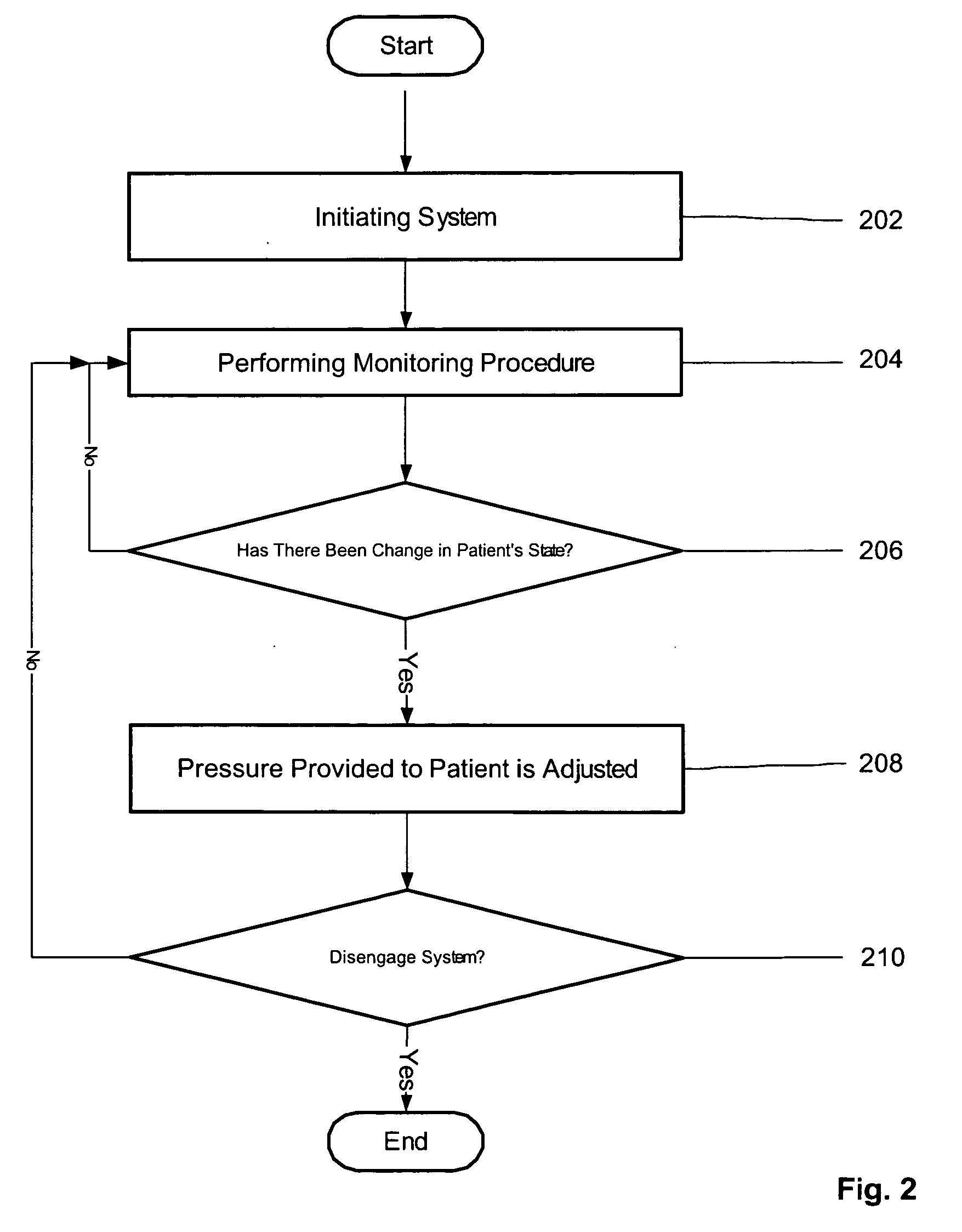Positive airway pressure system and method for treatment of sleeping disorder in patient
a positive airway pressure and patient technology, applied in the field of patient sleep disorder treatment, can solve the problems of affecting the sleep quality of patients,
- Summary
- Abstract
- Description
- Claims
- Application Information
AI Technical Summary
Benefits of technology
Problems solved by technology
Method used
Image
Examples
Embodiment Construction
[0019]FIG. 1 shows an exemplary embodiment of a system 1 according to the present invention. The system 1 may include a mask 20 which is connected via a tube 21 to receive airflow having a particular pressure from a flow generator 22. The amount of pressure provided to a particular patient varies depending on patient's particular condition. Such amount of pressure may be determined utilizing any conventional PAP therapy methods.
[0020] The mask 20 covers the patient's nose and / or mouth. Conventional flow sensors 23 are coupled to the tube 21. The sensors 23 detect the rate of airflow to / from patent and / or a pressure supplied to the patent by the generator 22. The sensors 23 may be internal or external to the generator 22. Signals corresponding to the airflow and / or the pressure are provided to a processing arrangement 24 for processing. The processing arrangement 24 outputs a signal to a conventional flow control device 25 to control a pressure applied to the flow tube 21 by the flo...
PUM
 Login to View More
Login to View More Abstract
Description
Claims
Application Information
 Login to View More
Login to View More - R&D
- Intellectual Property
- Life Sciences
- Materials
- Tech Scout
- Unparalleled Data Quality
- Higher Quality Content
- 60% Fewer Hallucinations
Browse by: Latest US Patents, China's latest patents, Technical Efficacy Thesaurus, Application Domain, Technology Topic, Popular Technical Reports.
© 2025 PatSnap. All rights reserved.Legal|Privacy policy|Modern Slavery Act Transparency Statement|Sitemap|About US| Contact US: help@patsnap.com



